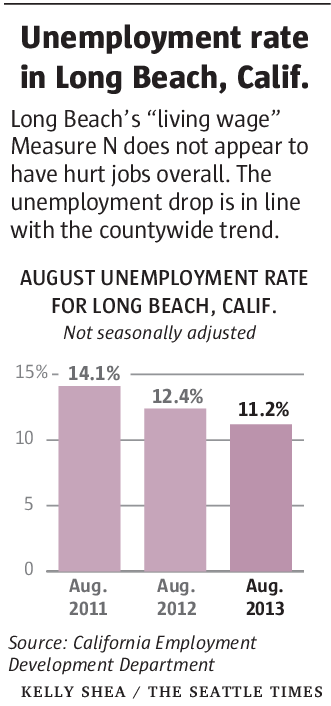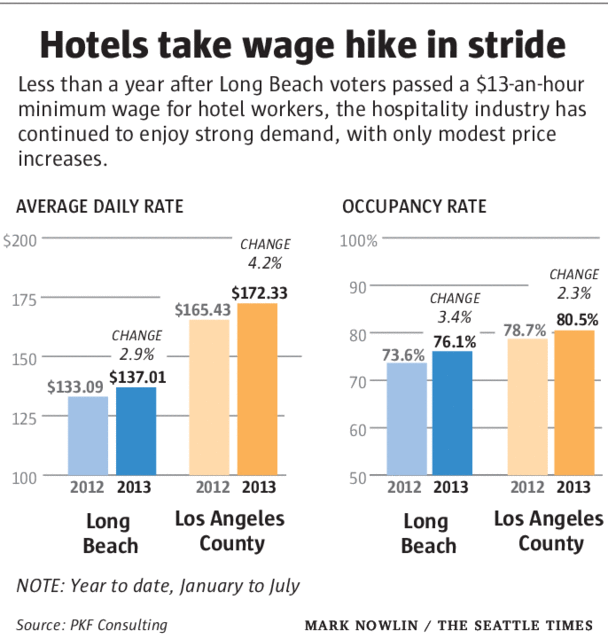Voters in the City of SeaTac this week appear to have approved a precedent-setting Living Wage ballot initiative, although ballots are still being counted. The pending victory comes after a nearly year-long campaign by a strong community-labor partnership.
Even if Prop 1 wins, the campaign is not over, as Alaska Airlines and many of the funders backing the opposition campaign are likely pursuing legal measures to prevent the implementation of the voter approved law.
SeaTac’s Proposition 1 is not the first living wage at airports, but it has become the bellwether in the movement for a living wage. The true benefit of Prop 1 lies not only in the living wage, but the comprehensive benefits and protections included in the language:
- $15 dollar minimum wage indexed to inflation – for covered hotel, car rental, parking and airport service workers.
- Paid Sick Days – workers accruing an hour of paid sick time for every 40 hours worked. For a full time employee, this is 6.5 days per year.
- Worker Retention – replacement sub-contracting companies retaining the current workforce for 60 days.
- Tips Theft Protection – ensuring that hotel service charges (tips) are paid entirely to workers, not kept by management.
- Full Time Work – offering part-time employees the ability to work more hours before hiring new part-time employees.
The initiative covers large hotels, car rental firms, and airport parking in a zone surrounding the airport, and airport service workers, including retail and food service, plane cleaning and fueling, baggage loading, and wheelchair service. These interlocking, comprehensive benefits mean that not only will thousands of workers be lifted out of poverty, but they will also have more job security and better working conditions.
These policies will mean a win-win-win scenario for workers, businesses and the local economy. Workers will see better standards, employers will see reduced turnover and improved performance, local businesses will have more customers, and the local economy will see a $54 million dollar wage boost.



